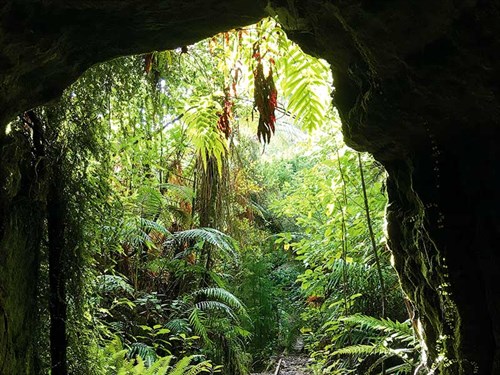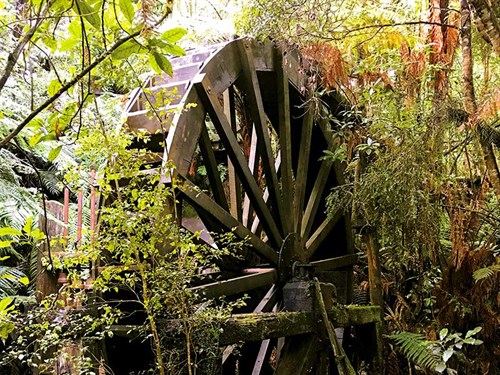Gold mining, wherever it occurs, has always fired my imagination. It’s something to do with the power the yellow metal holds over the human mind and the richness of the stories that stem from the scramble to find it.
If ever I were a miner in a past life, it would have been on the West Coast—an area of New Zealand that’s strewn with the romance of the old gold days.
But I wasn’t searching for gold or romance when, 83 kilometres north of Greymouth, I spotted an unobtrusive sign that read: Mitchells Gully Gold Mine. I ordered the driver (Bill) to pull the motorhome into the car park, and there we unearthed a treasure.

Rusting mining paraphernalia leaned against a rocky wall—wheels, rods and grinders of odd shapes and sizes, and, past an old horse cart and a garden of ferns, was the mine entrance by way of a small punga shed cluttered with items and rocks that were drizzled with authentic cobwebs and dust. There was no one about, but a sign pointed to an old tin can in which to post our $10 donation.
We creaked open the inner gate and found ourselves in an abandoned gold mine—no guidebooks, signage, or information. It was my kind of place where the curious are left to discover things for themselves and make of it what they will.
Exploring the gold mine

For the next hour, like intruders in the caves of Mordor, we poked our way through a labyrinth of diggings, peering into mineshafts and caves, and picking our way along dim tunnels and railway tracks. The forest was encroaching.
Ferns and mosses hung from banks and ceilings like Christmas decorations. The only sound apart from our own footfall was the ping of water drops hitting their targets. It needed imagination to conjure up the rattle of ore-carriages, the thud of pickaxes and machinery, the pounding of stamper batteries, and the gorilla assault on the ears that must once have rung through the valley.
Part way round the walk at the base of a steep descent, we came across a huge waterwheel, 20 metres high, and next to it were a working forge and a row of stampers (remnants of the 300 that once were here).

If owner Dean Currie had been there, he would have been interesting. Apparently, he’s a mine of information, but on that particular day, he’d gone whitebaiting. Dean is a direct descendant of the two brothers, John and James Currie, who founded the mine in 1866. James was his great, great grandfather.
When the mine stopped operating in 1914, an estimated 4,000,000 ounces of the ‘yellow’ had been extracted. The gold was apparently like flour and was embedded in the iron sands of an ancient beach that was as hard a concrete. Extracting it was extremely hard labour and would not have been romantic at all.
Heading towards the West Coast? Read more MCD articles on things to do and see in the region.





